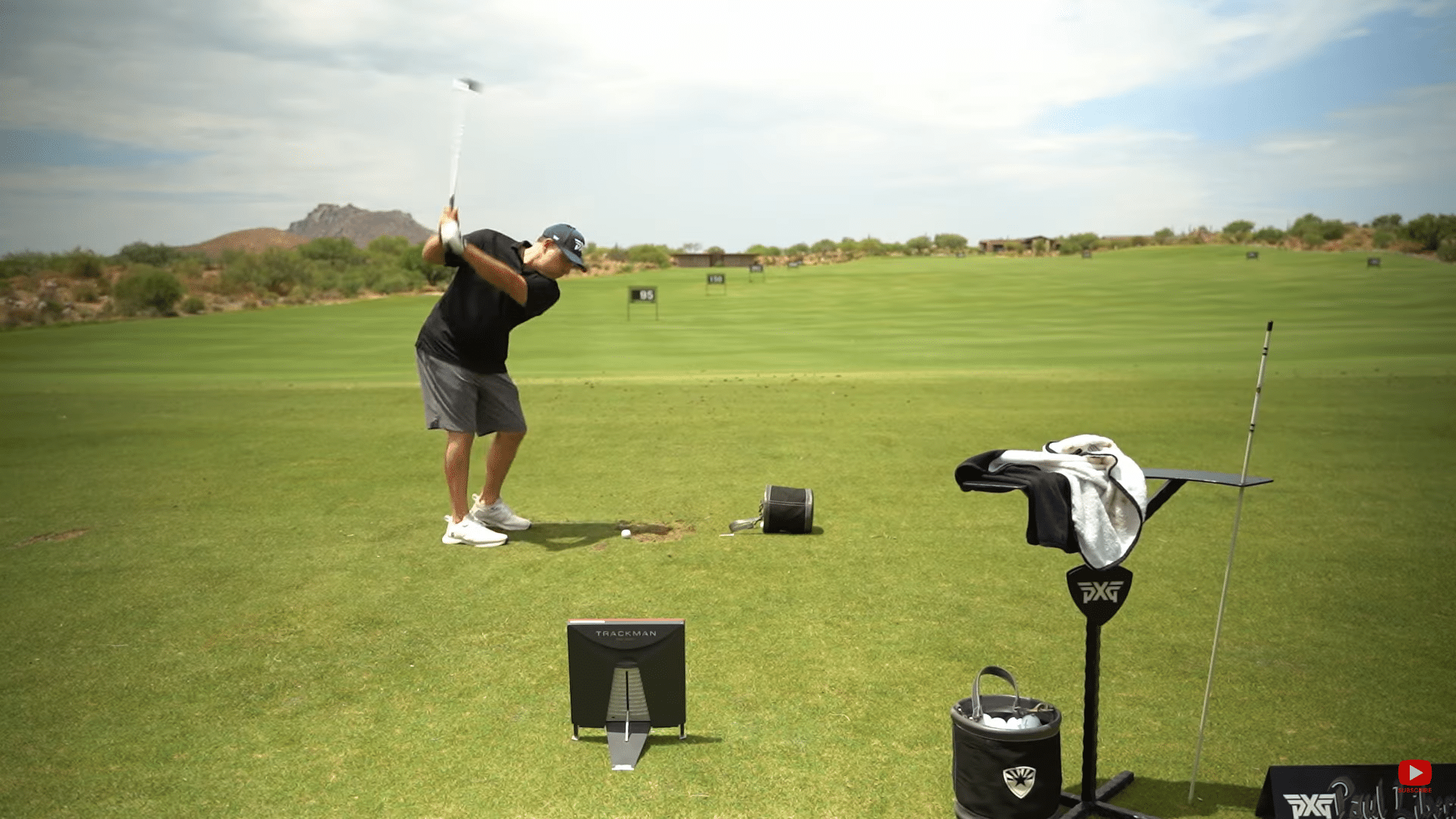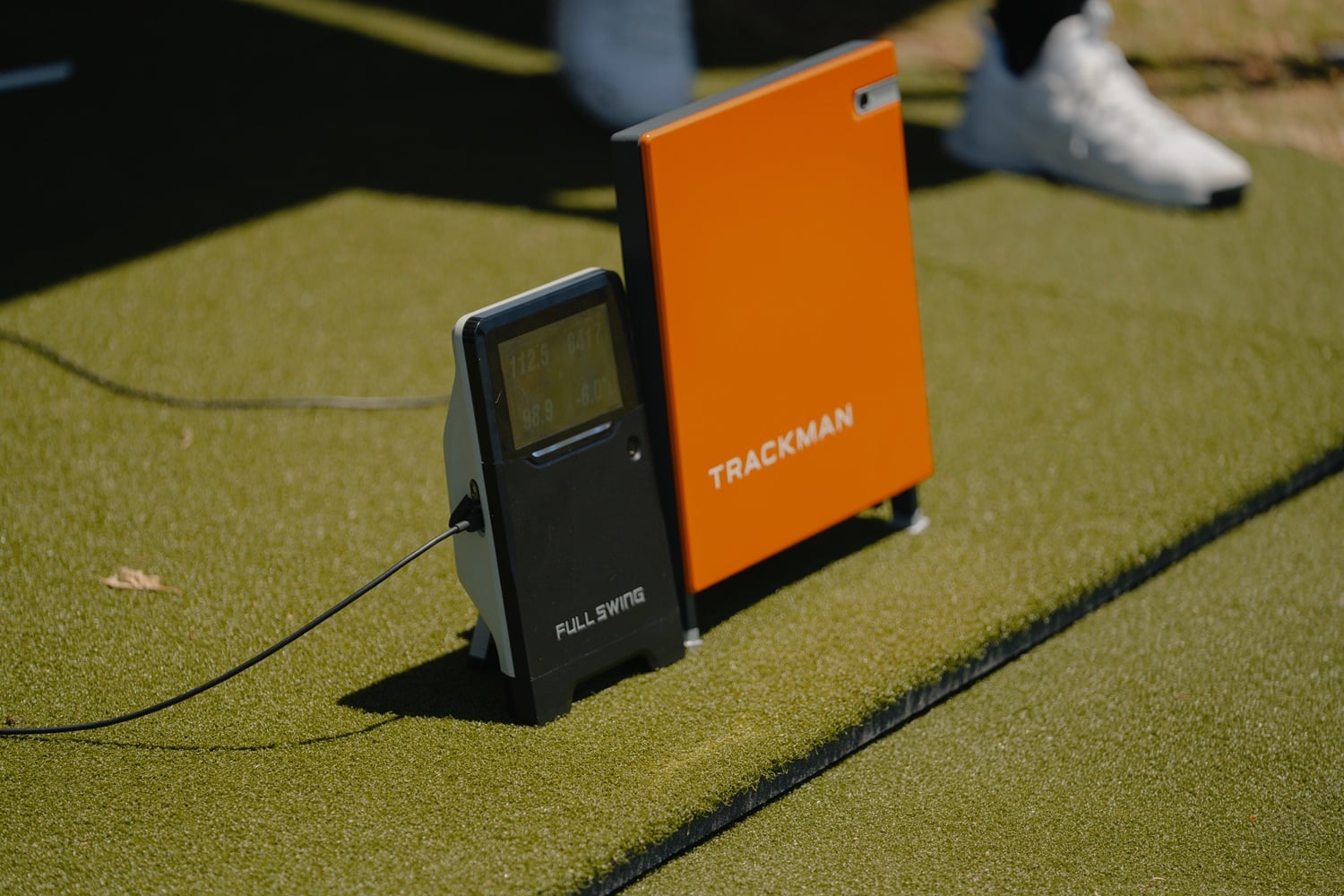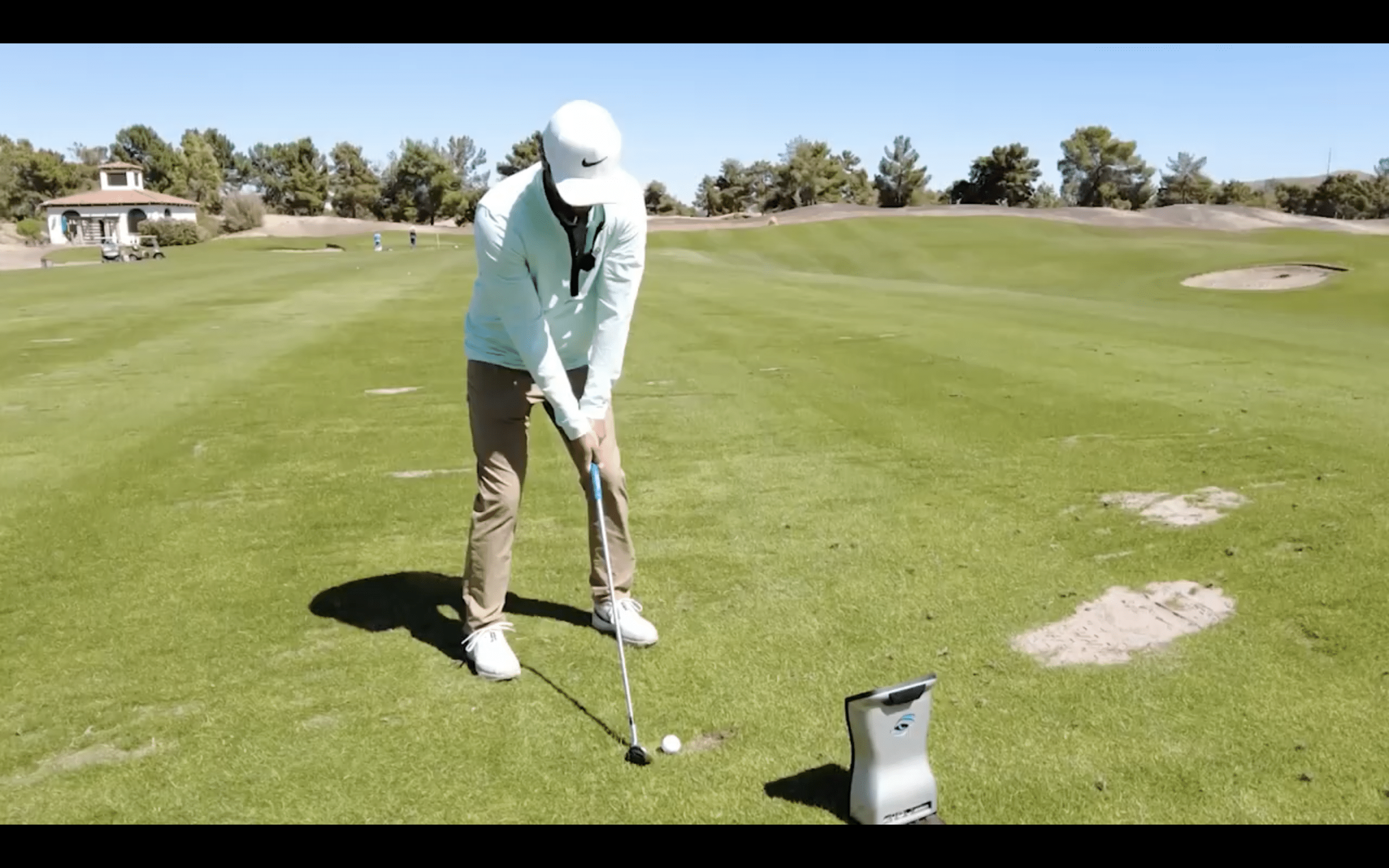You'll spend anywhere from under $1,000 for basic entry-level systems like OptiShot 2 to over $70,000 for professional TrackMan setups. Most homeowners find their sweet spot between $3,000 and $15,000, which gets you a solid launch monitor, impact screen, and quality software. Don't forget ongoing costs though—software subscriptions run $200-$750 annually, plus maintenance and electricity. Your space requirements and component choices will ultimately determine where you land on this range.
When you're shopping for a golf simulator, the price tag tells you a lot about what you're getting into. Entry-level systems under $1,000 give you basic swing sensors and simple software—think OptiShot 2 or Phigolf 2. They're perfect for casual fun but don't expect pinpoint accuracy.
Mid-range packages ($3,000–$10,000) step up your game considerably. You'll get better launch monitors from brands like SkyTrak or Mevo+, impact screens, and projector options. These systems capture key metrics like ball speed and spin, plus they come loaded with multiple courses. Keep in mind that software subscriptions for premium features and additional courses can add to your ongoing expenses.
Premium systems over $10,000 bring professional-grade accuracy with TrackMan or Foresight technology. They track everything from club path to launch angle using multi-camera setups, providing the kind of data tour pros rely on. The most immersive high-end setups can reach $70,000 when you factor in advanced customization and professional installation.

The launch monitor serves as the brain of your entire golf simulator setup, and frankly, it's where you'll spend most of your budget. Entry-level models like the Garmin Approach R10 and Swing Caddie SC4 Pro cost between $399 and $700, giving you crucial swing data without breaking the bank. The fact is—these budget options work great for casual golfers who want basic ball flight information.
Mid-range monitors jump to $1,500-$7,000, with professional-grade units like the Foresight GC3 starting around $7,000. These use advanced radar and camera technology for pinpoint accuracy. Top-tier models can exceed $20,000 but eliminate ongoing subscription fees. Speaking of subscriptions, budget models might charge $99 yearly or $9.99 monthly for premium features, while subscription-free options like the SC4 Pro save you money long-term.
At the premium end, TrackMan golf simulators can cost $20,000 to $70,000 or more, reflecting their status as the gold standard used by PGA professionals worldwide.
Beyond your launch monitor investment, software costs will quickly become your second-largest ongoing expense—and honestly, they can catch many buyers off guard. You'll find basic practice apps running free to $200 yearly, while serious course simulation software jumps to $300-$1,200 annually. Popular options like GSPro cost around $250/year, E6 CONNECT offers $300-$600 subscription tiers, and The Golf Club 2019 requires a one-time $950 purchase.
Here's the thing—subscription models dominate this space for good reason. You'll get rotating course libraries, regular updates, and multiplayer functionality. However, perpetual licenses lock you into specific versions without ongoing updates. E6 CONNECT provides both perpetual and subscription-based options to accommodate different user preferences and budgets. Commercial-grade software like Foresight's FSX can reach $3,000, targeting venues needing advanced features like league management and analytics. Software costs represent just one portion of your total simulator investment, which typically ranges from $3,000 to over $20,000 depending on your desired level of realism and features. Major software providers include TruGolf, Uneekor, Foresight, and GSPro, each offering different feature sets and pricing structures.
Once you move past software decisions, you'll need to tackle the hardware that actually makes your simulator work—and this is where costs can really add up quickly. Launch monitors are your biggest expense, ranging from budget SkyTrak units at $1,000–$2,000 to professional TrackMan systems exceeding $20,000. Mid-range options like Uneekor fall between $3,000–$8,000, offering solid accuracy without breaking the bank.
You'll also need an enclosure system—basic nets start around $300, while full structures with impact screens run $2,000–$5,000. Quality hitting mats cost $300–$1,000, projectors range from $300–$2,000, and you'll need a sturdy computer costing $1,000–$3,000. Each component directly impacts your simulator's performance and your wallet! Many high-end packages offer installation services included in the purchase price, which can save you time and ensure proper setup.
Keep in mind that photometric simulators start at $2,000 and use cameras to collect launch data, providing a middle-ground option between basic infrared systems and high-end radar monitors.

While you might think any spare room will work for a golf simulator, space requirements can make or break your budget in ways you probably haven't considered.
Here's the thing: minimum dimensions start at 9-10 feet wide, 12-15 feet deep, and 8.5-9 feet high. But cramped spaces force compromises that'll cost you later. You'll need to adjust tee placement constantly, risk damaging equipment, and face limited simulator options.
Comfortable dimensions around 12x16 feet with 9-foot ceilings dramatically improve your experience while keeping costs reasonable. Premium setups demand 14+ feet wide and 18+ feet deep.
The real budget killer? Ceiling modifications can add thousands if you're under 8.5 feet. Plus, inadequate clearance increases equipment damage risks, turning savings into expensive repairs. Adding buffer space around your simulator also improves safety and reduces accident risks during play.
For the ultimate experience, consider that projector placement works best with wider and deeper rooms to achieve immersive large screen sizes that truly enhance your practice sessions.
Radar-based launch monitors require 8 feet clearance on all sides, which significantly increases your minimum room size requirements beyond basic swing space.
Breaking down golf simulator costs by component reveals exactly where your money goes—and where you can save or splurge based on your priorities. Launch monitors eat the biggest chunk of your budget, ranging from $300 for entry-level units to over $20,000 for commercial-grade TrackMan systems. You'll spend $100 to $5,000 on simulation software, with subscription options like GSPro running around $250 yearly. Enclosures and screens add $300 to $5,000+ depending on whether you're using basic nets or custom installations. Quality hitting mats cost $100 to $1,000, while projectors range from $300 for basic HD models to $3,000+ for premium 4K units. Many beginners start with hitting nets to test their enjoyment before investing in expensive impact screens. Don't forget about hidden costs like curtains, cable management, lighting, and small accessories that can add several hundred dollars to your build. High-end simulators deliver pro-level accuracy and advanced analytics for the most demanding users. The point is—you can build a functional setup for under $2,000 or go all-out for $30,000+!
Beyond the initial sticker shock of your simulator purchase, you'll find that ownership brings its own parade of ongoing expenses that can catch budget-conscious golfers off guard. Software subscriptions hit initially—expect $200 to $750 annually for course access and updates. Your electricity bill will climb too, with projectors and computers running constantly adding hundreds yearly to your utility costs.
Here's the thing: maintenance isn't optional. You'll need quarterly calibrations and monthly updates to keep everything accurate, since 87% of precision problems stem from poor upkeep. Environmental monitoring helps prevent costly damage to electronic components from humidity and temperature fluctuations. Don't forget insurance either—adding expensive electronics to your home often requires policy upgrades costing several hundred dollars annually. Professional installation can help ensure proper setup and alignment from the start, reducing future maintenance headaches. If you're considering expanding into a commercial venture, commercial simulators typically range between $40,000 and $92,000 depending on the quality and features. Ultimately, depreciation quietly eats away at your investment as newer technology makes your system less invaluable over time.

Yes, you can absolutely finance a golf simulator purchase! Most vendors partner with financing companies like Affirm and Bread Pay, offering payment plans from 12 to 60 months. You'll find rates ranging from 0% APR promotions up to 30%, depending on your credit. The application involves just a soft credit check, so your credit score won't be affected during approval.
Yes, you'll need regular maintenance, but it's surprisingly affordable! Monthly tasks include cleaning sensors with compressed air, wiping screens with microfiber cloths, and updating software. Weekly vacuuming keeps the turf fresh. Most maintenance costs under $50 annually for basic supplies like cleaning cloths and compressed air. The biggest expenses are occasional hardware replacements like projector bulbs, but proper care prevents costly repairs.
Budget golf simulators give you decent ball speed and distance data, but they're nowhere near professional accuracy. You'll get measurements that work fine for casual practice, though spin data can be pretty unreliable. Professional units capture detailed club metrics like face angle and swing path that budget models ($200-$600) simply can't match. For entertainment and basic improvement, budget simulators do the job adequately.
Yes, you can absolutely upgrade your simulator components individually! Most systems are modular, so you can swap out launch monitors, projectors, hitting mats, or impact screens separately. Launch monitors offer the biggest bang for your buck—you can start with a $500 unit and upgrade to a $15,000 model later. Gaming PCs, software subscriptions, and enclosures can all be improved independently without replacing everything.
You'll typically recover 40-60% of your simulator's original value after a few years. High-end models like TrackMan hold their value better, while entry-level units depreciate faster due to rapid tech advances. Well-maintained simulators with complete accessories and no subscription requirements sell for more. The key factors are brand reputation, condition, and whether you've got all the original components bundled together.
You've got options for every budget regarding golf simulators. Entry-level setups start around $1,500, while premium systems can hit $50,000 or more. Don't forget those sneaky ongoing costs like software subscriptions and maintenance! The key is matching your budget to your actual needs. Whether you're a weekend warrior or scratch golfer, there's a simulator that'll work for your space and wallet.